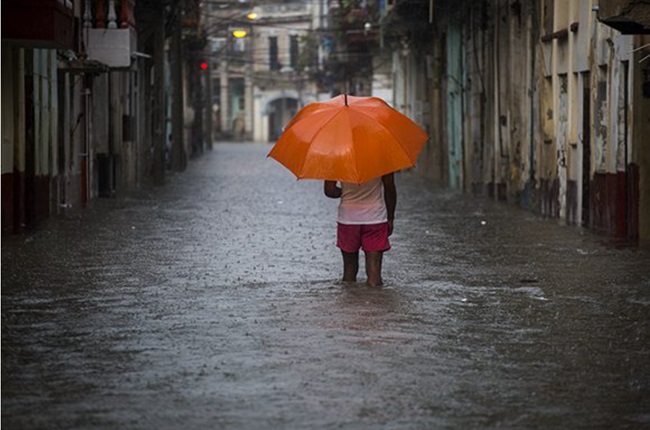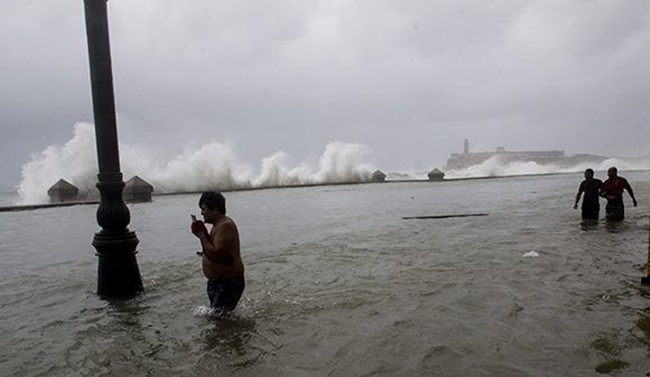Hurricane Season: The Doors that June Opens

The arrival of June, July and August is celebrated by many because it’s equivalent to the end of the school year, vacations, the beach... but along with this sixth month, the door also opens to a stage that is not applauded: that of hurricanes.
This season is coming in hard, as announced by domestic and foreign experts.
They predict that the current hurricane season, which began on June 1st and which will last until November 30, will be very active for the North Atlantic basin, including the Gulf of Mexico and the Caribbean Sea.
It’s even expected that "it could be the most aggressive known," according to what Dr. Miriam Teresita Llanes Monteagudo, head of the Forecast Center of the Institute of Meteorology, expressed in Granma Newspaper.
In particular, the Cuban Institute of Meteorology predicts the occurrence of about 20 tropical storms, of which 11 could become hurricanes. Of that total of tropical storms, it’s possible that four will occur in the Caribbean Sea and two in the Gulf of Mexico.

There’s an 80% chance that we will be affected by at least a hurricane, and a 90% chance by a tropical cyclonestrom. In June, the main area of hurricane formation is located in the western Caribbean Sea.
According to what was reported by colleague Orfilio Peláez, the oceanic and atmospheric conditions over the Atlantic and the Caribbean Sea are, currently, very favorable for hurricane activity, due to the unusual warming of the sea in the entire area, where uncharted values are read.
Added to the above is the high probability that the El Niño/Southern Oscillation event (Enos) will be followed in the footsteps, starting in August, by La Niña/Southern Oscillation (Aenos).
The Cuban Institute of Meteorology (Insmet) is one of the few scientific institutions in the world that issues seasonal forecasts on hurricane activity, based on a statistical synoptic method created by doctors of science Maritza Ballester Pérez (now deceased), Ramón Pérez Suárez and Cecilia González Pedroso, as reported by ACN.
Rainy June

This June, which has just begun, not only inaugurates the hurricane season each year, but is the second month of the rainy period in Cuba, and, on average, it’s the rainiest in the calendar, according to the Insmet Climate Center onwebsite.
Especially in the first 20 days of this month, the greatest rainfall occurs, which usually lasts several days.
These precipitations depend on the influence of tropical zone systems, such as tropical waves and depressions, as well as their interaction with mid-latitude systems.
June rains are also usually due to diurnal warming, and are generally accompanied by electrical storms, whose period of greatest activity also begins this month, although not simultaneously in all regions of Cuba. They usually show a gradual increase towards areas of the interior of the country, during the afternoon and early evening.

In this month it’s rare for a tropical hurricane to hit us, points out the same source, "but when it does occur, it usually produces heavy rainfall."
According to estimates, this June rainfall above the historical average should occur in the three regions of the nation: west (307 mm), with an estimated temperature for the period of between 31.3-32.5 degrees Celsius; center (289 mm), with temperatures between 31.5-33.1 degrees Celsius; and east (177 mm), with between 31.8-32.4 degrees Celsius.
In the skies of the sixth month
Although it will be difficult for it to compete with the total solar eclipse that occurred in April, or with the geomagnetic storm in May, June is also determined that we look at the skies, not just for storms or rain, but also for interesting astronomical phenomena.
In addition to a succession of conjunctions of stars, on the 20th the Summer Solstice will take place, which occurs when the sun reaches its highest point of northern or southern declination in relation to the equator.

Solstices occur twice a year, associated with the beginning of the seasons. Summer occurs this month in the northern hemisphere, and in December, in the south, when the days are longer and receive more sunlight. The Winter Solstice takes place in June in the southern hemisphere, and in December in the north.
Thus, next Thursday the 20th will mark the first day of summer and the longest day of the year for the northern part of the planet; while on the other side, the southern hemisphere, the shortest day and the longest night will occur.
In countries in the northern hemisphere, the Summer Solstice occurs between June 20 and 22 each year. Last year, it was June 21st. Marked by ancient traditions, this event is celebrated by many cultures, since it’s associated with harvests and fertility. It’s not by chance that the name of the month itself, June, is associated with that of the Roman goddess Juno, the goddess of fertility, marriage and family.
Just after the solstice, on the 21st, the full Moon known as the "Strawberry Moon" will take place, whose name is not due to a change in the color of that satellite, but because Native American peoples and indigenous tribes in the East of North America they named it that way because during this period the harvesting of wild strawberries takes place in that part of the world.
Alledged prophets, seers and others from the same background assure that this sixth month comes loaded with positive energies and good luck, which would be magnificent; but, in any case, in addition to contemplating suns and moons, in this little piece of the Caribbean it’s worth taking precautions now against possible rains and in the face of the hurricane season, which is announced with an unfriendly face.
Translated by Amilkal Labañino / CubaSí Translation Staff














Add new comment